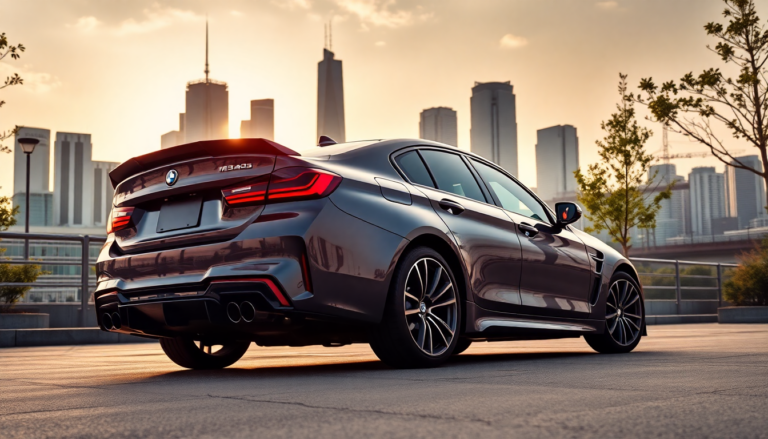Argomenti trattati
When you think of high-performance vehicles, the BMW M3 undoubtedly stands out. It’s not just a car; it’s a **symbol of excellence** that has enthralled automotive enthusiasts since it first hit the streets. Over the years, this legendary vehicle has transformed from a sporty version of the 3 Series into a true icon. In this article, we’ll take a journey through the fascinating history of the M3, tracing its evolution from the classic E30 to the modern G80, while also exploring its technical specs and market allure. Buckle up!
The Birth of an Icon: The E30 M3
Back in 1985, BMW set out with a bold vision: to craft a sportier version of its 3 Series that could dominate European touring car championships. This ambition led to the creation of the M3, which quickly became the gold standard for high-performance sedans. The unveiling of the E30 M3 at the Frankfurt Motor Show was nothing short of revolutionary, capturing the attention of critics and car lovers alike.
Under the hood, the E30 was powered by the **S14 engine**, a 2.3-liter four-cylinder beast delivering 195 horsepower. This powerhouse could rocket from 0 to 100 km/h in just 6.7 seconds! With its wider track, larger wheel arches, and the iconic rear wing, the E30 M3 had an aggressive look that matched its thrilling performance. Later iterations of this model, including the M3 Sport Evolution, even cranked up the power to a staggering 238 horsepower. Who wouldn’t want to get behind the wheel of a car like that?
Generational Evolution: From E36 to E46
The M3 evolved again in 1992 with the launch of the E36 model. This generation introduced a new inline six-cylinder engine with a 3.0-liter displacement, kicking out an impressive 286 horsepower. And just two years later, BMW upped the ante by increasing the engine size to 3.2 liters, pushing power to 321 horsepower. With innovations like a six-speed manual transmission—and later, a sequential SMG transmission—the driving experience became even more engaging.
Fast forward to 2000, and the M3 welcomed the E46 generation. This version boasted a more robust 3.2-liter inline-six engine producing an exhilarating 343 horsepower. Notably, it also introduced the lightweight **CSL variant**, optimized for track use, showcasing BMW’s relentless commitment to performance and agility. Isn’t it remarkable how each generation brings something new to the table?
The Modern Era: E92 and G80 Generations
The E92 generation represented a significant turning point, as it was the first—and only—M3 to feature a V8 engine. With a 4.0-liter naturally aspirated unit generating 420 horsepower, it could sprint from 0 to 100 km/h in just 4.8 seconds. This generation offered various body styles, including sedan, coupe, and convertible, proving that you don’t have to sacrifice versatility for performance.
Now, let’s talk about the latest G80 generation, which brings us back to the six-cylinder roots with a 3.0-liter twin-turbocharged engine. Here, you have two options: 480 horsepower with a manual transmission or an impressive 510 horsepower in the Competition variant with xDrive all-wheel drive. With a jaw-dropping acceleration of 0 to 100 km/h in just 3.5 seconds, the G80 solidifies the M3’s standing in the high-performance market. Can you feel the adrenaline yet?
The M3 as a Collectible Classic
Today, the BMW M3 is among the most coveted classic cars, especially the earlier E30, E36, and E46 models. The values of these beauties continue to soar, particularly when they’re in original condition or boast low mileage. Collectors and enthusiasts admire the M3 not only for its rich sporting heritage but also for its practicality as a high-performance sedan or coupe that’s perfect for everyday use.
Moreover, many enthusiasts see the M3 as an excellent platform for **restomod projects**. These projects breathe new life into classic cars, updating their mechanical components and aesthetics while respecting their original spirit. The E30, with its mechanical simplicity and readily available parts, is especially popular for these endeavors. Isn’t it fascinating how the M3 can bridge the gap between nostalgia and modern engineering?

